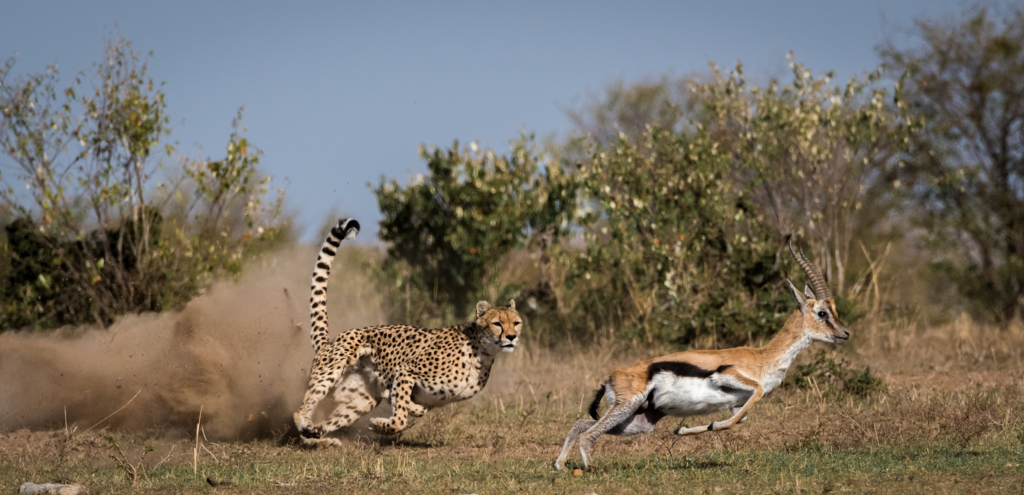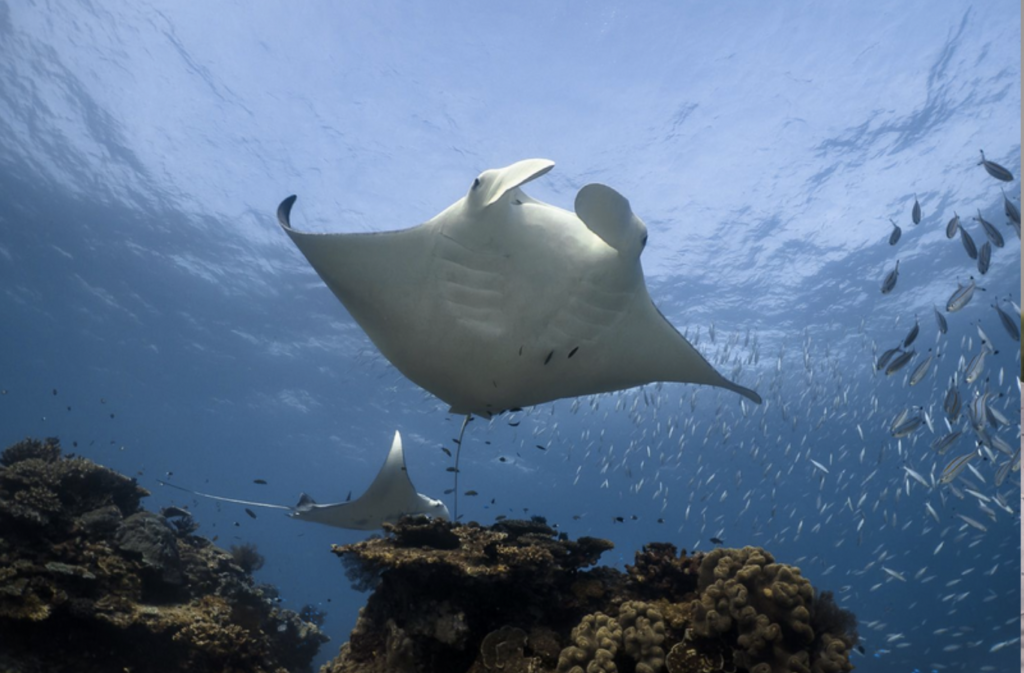What works for me might work for you.
My Low Effort, No Scriptwriting, No Memorization Workflow
It’s getting harder to learn things on the internet.
Google search is an SEO-fueled dumpster fire of AI-generated content. Much of it reads like a marketing droid overdoing it with the cliches and exclamation points. Too often, reading a “how to” post feels like the “How to draw an owl” meme:
In this article, I’m going to map out my process for generating ideas and turning them into videos in the hopes that it will help you do the same. After years of iteration, I finally found a low-effort, low-burnout approach. Sustainable approaches matter. I know Youtubers with millions of subscribers whose fun hobby corroded into a soul-sucking job. Also, I hate writing scripts and memorizing lines so this process will avoid that as well.
This process has been so effective for me that writing this essay was hard; it’s simple enough that one can internalize it enough such that it becomes automatic.
Hopefully, this writeup will be specific enough such that if anything resonates, you can borrow that approach for your own ends. It took me years of iteration and practice to nail this process, so it will save you some time.
Good Ideas Don’t Come on a Schedule
Sitting down and trying to brainstorm ideas for videos is a bad strategy. And while I prefer not to frame myself as an artist (seeing myself as an entrepreneur is more helpful), generating ideas for videos is more art than science. Good ideas rarely arrive at predictable, regular intervals.
Rather than sitting down, staring at the blinking cursor, and forcing myself to generate ideas on demand, I prefer to capture ideas as they come. The best way I’ve found to explain this approach is to draw inspiration from animals.
The Manta Ray Method
A manta ray is an ocean-dwelling creature known as a “filter feeder.” They sustain themselves through slow, low-exertion swimming, gently hoovering up plankton and nutrients in their path. They never stop moving, which means they never stop fueling themselves.
The cheetahs’ hunting style is different. This animal sustains itself through intense bursts of exertion. The cheetah’s hunting style—sprinting after prey—is exhausting. After just a few minutes of a high-speed chase, a cheetah needs an hour to recover.


Lots of people work like cheetahs. Sprint after sprint of unsustainable, burnout-inducing effort. I’ve been there, done that. It sucked. When it comes to being a creator, my spirit animal is the manta ray. Rather than hyper-focused, high-effort brainstorming sessions, I simply keep myself open to thoughts that arise as I go about my day. Those thoughts lead to good ideas for videos (and writing, and work, and life).
What activities tend to spark the most ideas? My best ideas often arrive as byproducts of the following five activities.
Conversations with friends
The back-and-forth of compelling conversation elicits good ideas. Let the conversation wander and sprawl; explicitly stating “let’s generate good ideas” fences in thinking and leaves us too fixated on the goal.
You will notice over time that some conversation partners spur better ideas than others. You will also note some people are Debbie Downers; black holes of inspiration sucking the life out of any exchange. I find myself seeking out interactions with idea-generative people more often and avoiding the latter completely.
Reading (but not in the way you think)
Reading is useful in a predictable sense in that good books transmit good ideas. But a secondary, more generative phenomenon emerged over the years: some of my best ideas happen when my mind wanders during the act of reading. I used to think I was “doing it wrong” when my mind wandered during a book. Now I welcome it because it’s one of my best sources of inspiration.
Walking
This one is obvious so I won’t belabor it. Taking a stroll sparks good thinking. Research says that walking outside (and better yet, in unfamiliar routes) begets novel ideas because new neurons are firing. Who knows if that research would survive the replication crisis. All I know is that I go walking and ideas magically come to me.
Writing and Filming
Whenever we turn on the kitchen faucet, more water pours out than we actually need. There’s always extra drops that go into the sink rather than our cup. Writing and filming are similar in that they can be generative beyond the short-term goal. If you’re writing or filming, new ideas for other works will emerge during the creative process. Be open to those ideas, knowing that you may use them down the road.
Meditation
The “point” of meditation is to foster well-being and reduce suffering; it has nothing to do with generating amazing ideas for videos that accelerate the growth of your business and career. Yet the act of meditation leads to a shedload of ideas.
Why does this happen? It could be giving the brain “space to breathe,” shedding distractions, or removing mental clutter. I don’t care. I’m just appreciative that the Buddha and other holy people from previous centuries developed these practices for the rest of humanity.
These five activities spark good ideas. So once I’ve generated an idea, what do I do?
Capture The Idea
It is imperative to store ideas once you have them. Telling yourself you will be able to recall it later doesn’t work.
Jot it down on a pen and paper, Apple notes, a google doc, whatever. I use a note-taking app (Roam Research—but Evernote, Notion, etc. are all fine). Here’s the exact method I use when an idea pops in my head:
- I pull out my phone
- Tap the Roam app
- Tap the mic icon to enable dictation
- Rattle off my idea, checking that Siri is in fact transcribing the text.
Review The Idea
The next time I open my note-taking app on my computer, I’ll see the note I created. The first step here is to review if there were any serious dictation errors (if Siri’s transcription was bad, trying to decipher the word phonetically helps).
Next, I pause for a second and ask myself: does this idea seem “good”? It’s hard to recognize good ideas, so another way of filtering is to ask: does it resonate? Does it seem interesting? Am I eager to play with it a bit? Do I think this will lead to a video that will grow my audience, attract clients, and create opportunities? If nothing about it seems interesting or I have no idea why I jotted it down, I delete it.
Tag the Idea
Finally, I tag it (Technically, I give it a backlink. But explaining backlinks is beyond the scope of this piece. In short, backlinks are a feature of some note-taking apps that allow you to connect your notes bidirectionally.)
My note-taking system contains everything going on in my life: my personal journal, to-do lists, shower thoughts, salsa recipes, and…ideas. Tagging means that I can designate the note as an idea so it doesn’t end up categorized as a salsa recipe.
Lately I’ve learned that when I drape my ideas in a personal story, the idea resonates better. When I have a story-worthy experience (the bar is not high), I add the tag [[story]]. Later, I can view all of the stories I have made note of:
Marinate on the Idea
If I’m super fired up about this idea and it feels fully fleshed out, I turn on my camera and film a few takes. When this happens, I thank the gods of creativity and revel in my undeniable awesomeness.
But this is rare. Most ideas are fragile, unformed, and disjointed in the beginning. Those early takes aren’t flawless. The marination phase is where you give the idea a chance to become richer and more substantial.
Simply put, this phase is when I shift my attention to other tasks and let my subconscious go to work. Now that I’ve captured and reviewed the idea, I don’t need to worry about losing it. Over hours, days, and (often) weeks, my subconscious is turning it over like an ocean wave rolling a pebble on the shore. If better ways of explaining it or articulating the idea pop in my head, I jot another note.
Marination may kill the idea by revealing flaws in reasoning or that it’s a shoddier version of something that already exists. If that’s the case, I delete it. Which is totally fine. Having a sustainable, sturdy process for generating, capturing, and developing your ideas makes you feel less worried that you will lose anything great. It’s kinda like when you succeed at creating an exercise habit—one particular exercise or muscle group becomes less important to you than maintaining the habit.
Sometimes, after marinating on the idea, I find myself uninterested and uninspired in whatever I wrote. If this happens, I don’t force it. I just let it go confident knowing that new ideas will come along shortly. (I’m sharing this because I wish someone had shared it with me earlier: beating myself up for not caring about an idea is a waste of energy.)
But most of the time, some of the best turns of phrase and strategies for expressing an idea emerge during the marination phase, which optimizes for “shower thought” style insights and breakthroughs.
Optional: Conversation Testing
Earlier, we talked about the Manta Ray method of noticing when conversations veered into territory that might make for an interesting video. Conversation testing switches from passively noticing into actively testing our ideas. This practice involves slipping the idea into conversation, which serves as an opportunity to get used to saying the idea out loud. This act functions like a dress rehearsal before you turn on your camera and start recording. Doing so is illuminating: you might find your idea wasn’t as fully formed as you thought. Or you may find something you thought was weak is actually more promising than what you anticipated.
What’s even more valuable about slipping the idea into conversation is that it gives you an opportunity to receive feedback. Despite how often writers and entrepreneurs scream about the value of feedback on our ideas, doing so is still underrated.
When you slip the idea into conversation, pay close attention to how people react. They may resonate with something you thought was a minor element. They may get confused at areas you thought were clear.
Prioritize nonverbal communication over the words people say. Facial expressions, tones of voice, and energy levels when they speak about your idea reveal the most. I also recommend against giving lengthy prefaces where you explain your intent of asking for feedback. I’ve had better luck shoehorning my ideas into conversations and gauging reactions. Our goal here is not to get their feedback on what they think is best; we want to know what they personally like and dislike.
Filming without a Script
The approach we have outlined thus far offers a low-effort way to generate and spend time with your ideas. The marination phase in particular allows your mind to develop a familiarity with the idea. Speaking to a camera is unnatural enough; having to speak on an idea that feels foreign only makes it more stressful. By marinating on an idea, you become more comfortable, which eases the filming process.
Marination also can remove the need for a script entirely. In the best case scenario, I can sit down, hit record, and rattle it off to the camera. If that’s a bridge too far, I jot down the key talking points on a post it note and attach it as close as possible to the camera lens.
That’s a Wrap
So that’s it!
The process I’ve outlined is the path that my ideas take until I hit record and turn my face to the camera lens. It’s slower than other approaches but it’s ultimately more sustainable. And “sustainable” is just a fancy word for “won’t give up on it,” which matters more than any productivity hack or software tool.
Editing and publishing are different processes altogether. If there is demand, I will cover those in later pieces. Like the idea-to-filming process, there are specific aspects of the filming process that can make editing and publishing a lighter lift.
I’ll close this piece with some guidance that has nothing to do with workflows. An underrated way to make good videos is to live an interesting life. Take risks, introduce yourself to strangers, do things outside of your comfort zone. Doing this can’t help but make the stories you tell more interesting to audiences online and off.
Thanks to early readers: Adam Saks, Hesam Panahi, Monica Q. F. de Magalhaes
Get weekly tips on entrepreneurship, video, and shooting your shot in my newsletter: https://www.camhouser.com/newsletter
